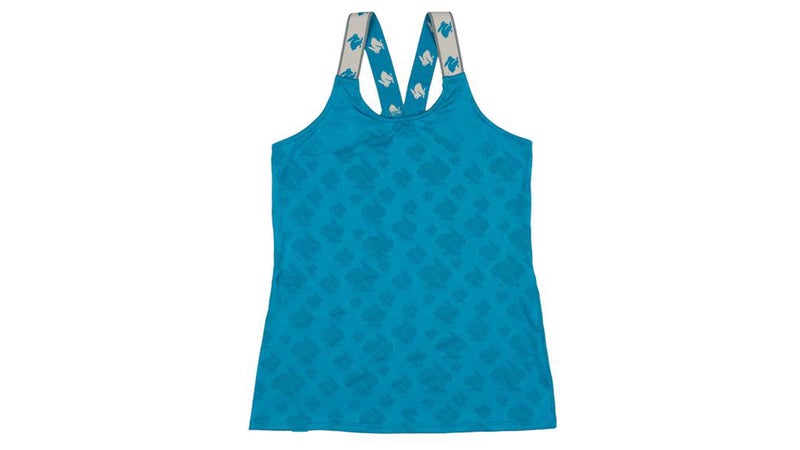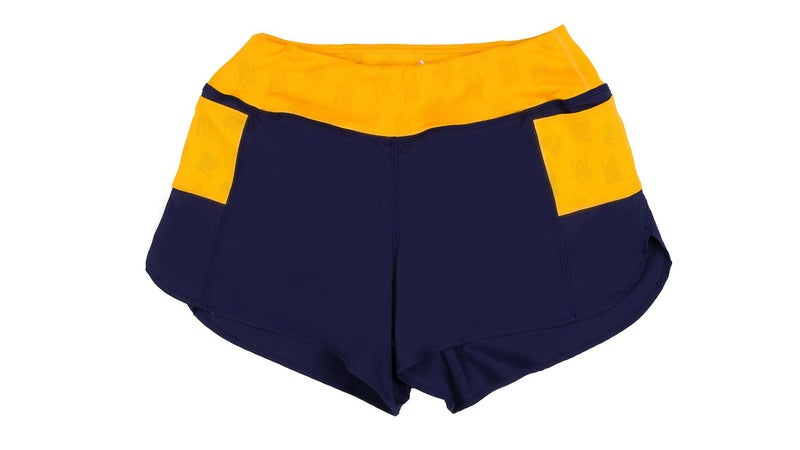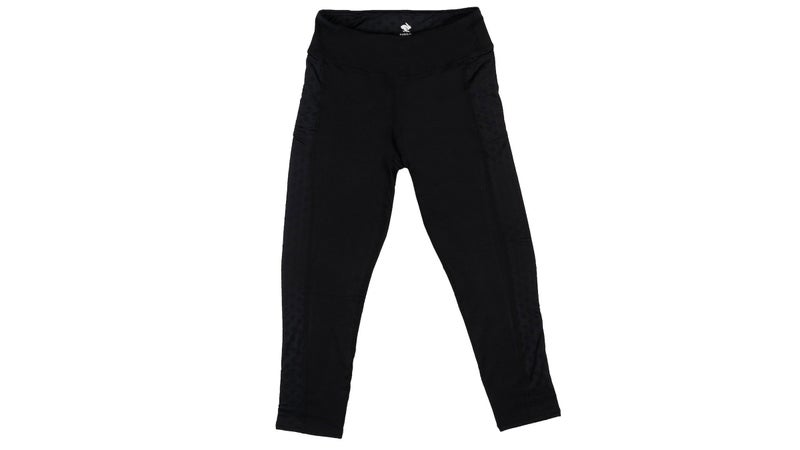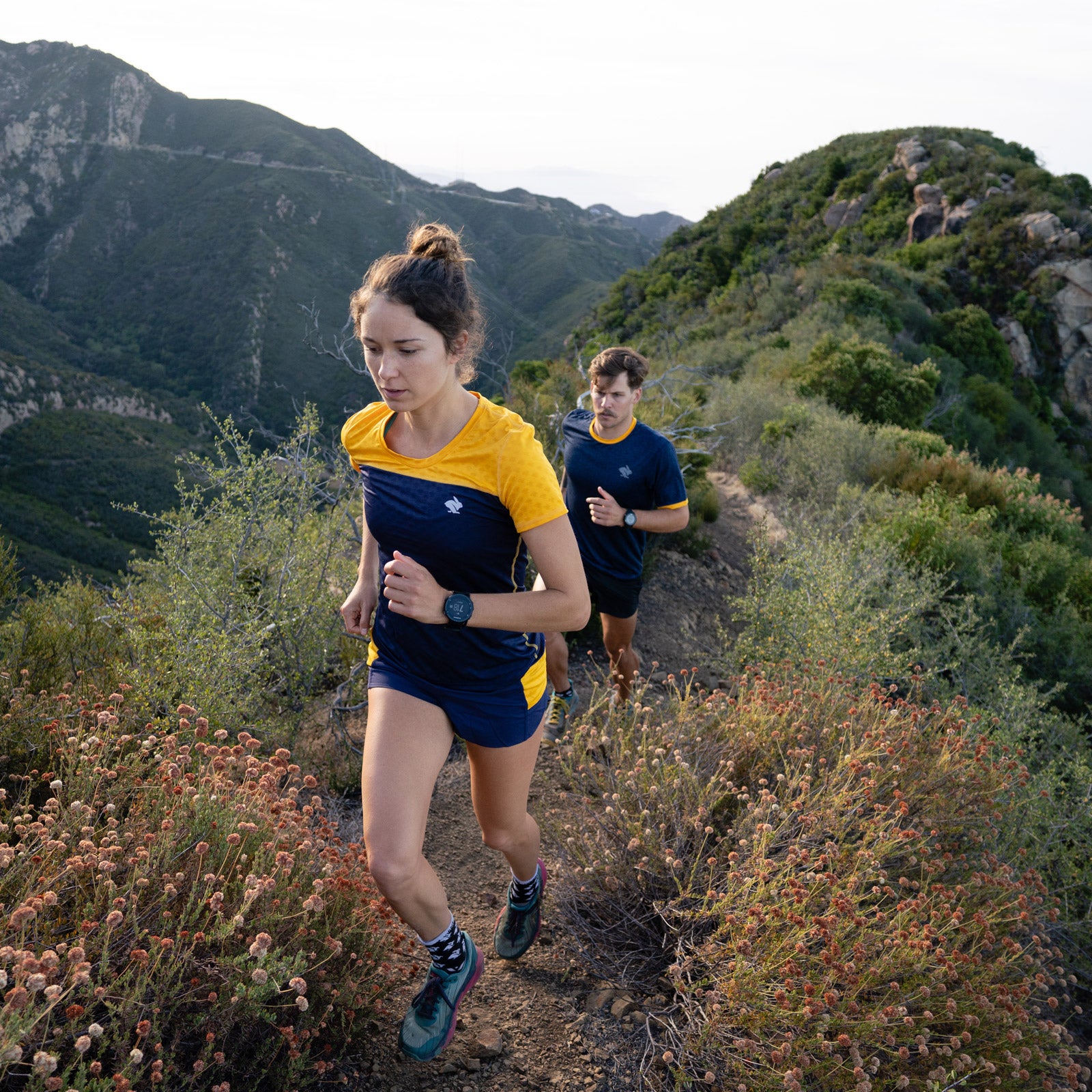came about in the same way that many small outdoor brands do: dissatisfaction with what was currently on the market. Co-founder Monica Devreese had spent years watching apparel go from the box to the wall to the sale rack at she owns with her husband in Santa Barbara, California. “Major brands were shifting toward athleisure [designs that are fashionable enough for daily life], and they had lost the cuts you need for running,” Devreese says. “Tanks would hit me in the middle of my thighs, or there would be 800 straps.” Most of it didn’t sell.
Co-founder Jill Deering, a member of the women’s running team Devreese leads through the shop, had been grappling with many of the same frustrations. She brought it up during a group run. “Would it be crazy to start a running clothing brand?” she asked. Devreese, who had previously worked in marketing for Adidas, answered with an unequivocal no. Within a few months, the pair had found a few small factories in Los Angeles and hired some freelance designers.
Devreese and Deering operated with the assumption that their clothing didn’t need to be overtly fashionable or high tech to sell; it just had to fit well, feel good, and function the way runners need. “We weren’t going to overthink or overdesign the product,” Devreese says. “We wanted to go back to the basics.” They started with the essentials: tanks and shorts, in three different inseams for men and two for women.
Rabbit launched on Kickstarter in December 2015, raised more than $45,000, and shipped its first orders the following May. Word quickly spread. Today, the company’s clothes are all over the trails, including on the backs of elite professional Hoka athletes, whose kits Rabbit designs. The apparel doesn’t look markedly different from the rest of the market, but I’ve dug through dirty laundry more than once just to find my favorite Rabbit bottoms, because little else in my drawer compares. Here are a few of my favorite pieces.
Straptastic Tank ($48)

In a word, is breezy, both in terms of fabric and fit. Its thin, airy mesh is fitted just enough to hug the body and stay out of the way yet loose enough to avoid clinging or riding up over your hips—a happy medium that few running tops I’ve tried have nailed. Wide elastic straps offer a tad more stay-put power than your typical racerback tank but don’t dig in or feel tight.
Dirt Pounder Shorts ($62)

This is hands-down the best pair of running shorts I’ve ever owned. The wide, flat elastic waistband feels supportive and doesn’t stretch or sag, and the ever-so-slightly split leg offers room for muscular thighs. And thanks to that split, the shorts drape flat in the rear rather than poofing out. Finally, the slew of pockets—two in the waistband, one on each thigh, and one zippered on the back—are perfect for holding keys, headphones, and an ultra’s worth of gel and bar wrappers.
Utilicapreeze Tights ($85)

Rabbit took everything I love about my favorite black yoga tights—the high rise and hold-you-in polyester-spandex blend—and added panels of lighter but durable mesh along each thigh for breathability. Like the Dirt Pounder shorts, the have pockets. But unlike the side pockets on other tights, these sit higher up, just below the hip, which keeps your phone snug while you run.


